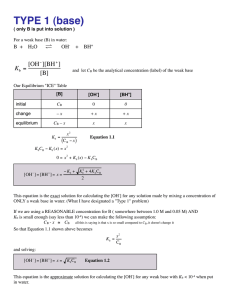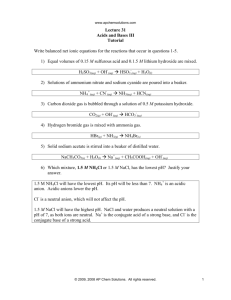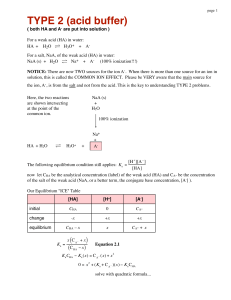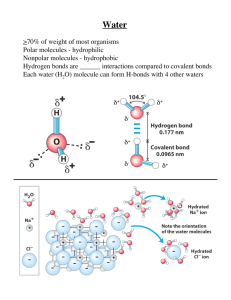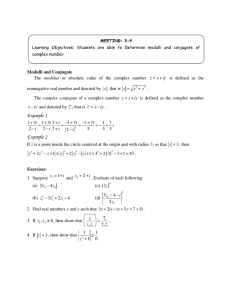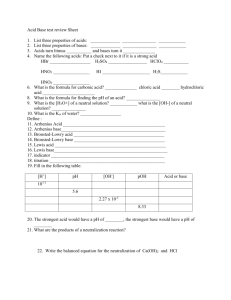TYPE 1 (conj. BASE of weak acid)
advertisement
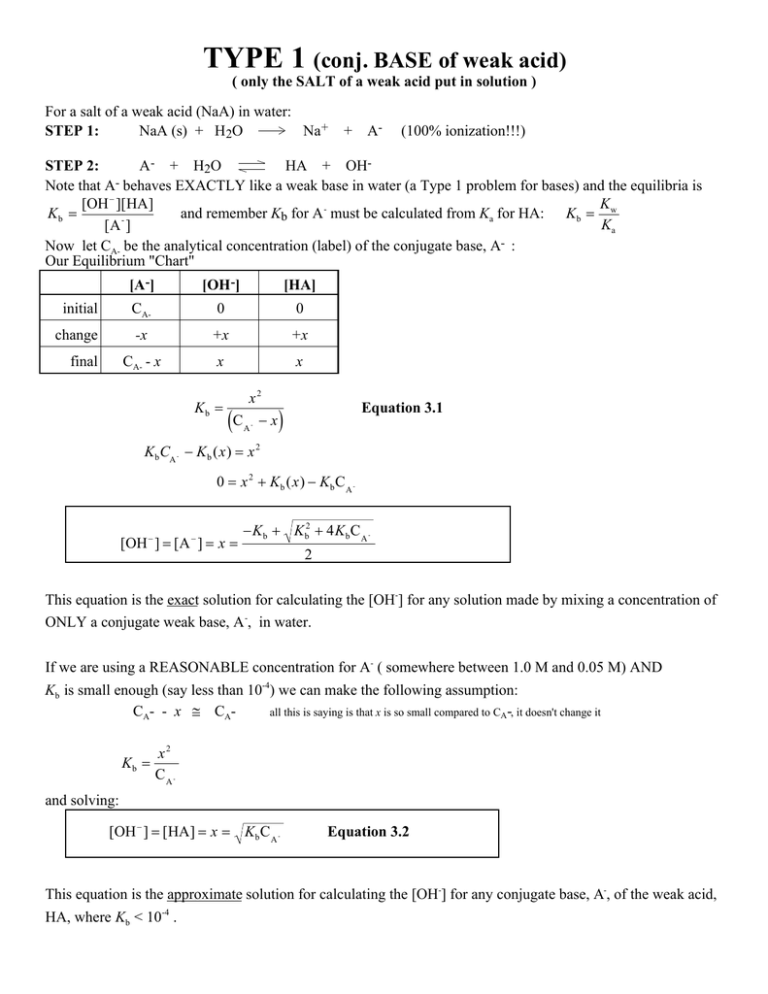
TYPE 1 (conj. BASE of weak acid) ( only the SALT of a weak acid put in solution ) For a salt of a weak acid (NaA) in water: STEP 1: NaA (s) + H2O Na+ + A- (100% ionization!!!) STEP 2: A- + H2O HA + OHNote that A- behaves EXACTLY like a weak base in water (a Type 1 problem for bases) and the equilibria is [OH − ][HA] K and remember Kb for A- must be calculated from Ka for HA: Kb = w Kb = Ka [A ] Now let CA- be the analytical concentration (label) of the conjugate base, A- : Our Equilibrium "Chart" [A-] [OH-] [HA] initial CA- 0 0 change -x +x +x CA- - x x x final Kb = ( x2 CA - − x ) Equation 3.1 Kb CA - − Kb ( x ) = x 2 0 = x 2 + Kb ( x ) − Kb C A - − − [OH ] = [A ] = x = − Kb + Kb2 + 4 Kb C A 2 This equation is the exact solution for calculating the [OH-] for any solution made by mixing a concentration of ONLY a conjugate weak base, A -, in water. If we are using a REASONABLE concentration for A- ( somewhere between 1.0 M and 0.05 M) AND Kb is small enough (say less than 10-4) we can make the following assumption: all this is saying is that x is so small compared to CA-, it doesn't change it CA- - x ≅ CAx2 Kb = CA and solving: [OH − ] = [HA] = x = Kb C A - Equation 3.2 This equation is the approximate solution for calculating the [OH-] for any conjugate base, A-, of the weak acid, HA, where Kb < 10-4 .
